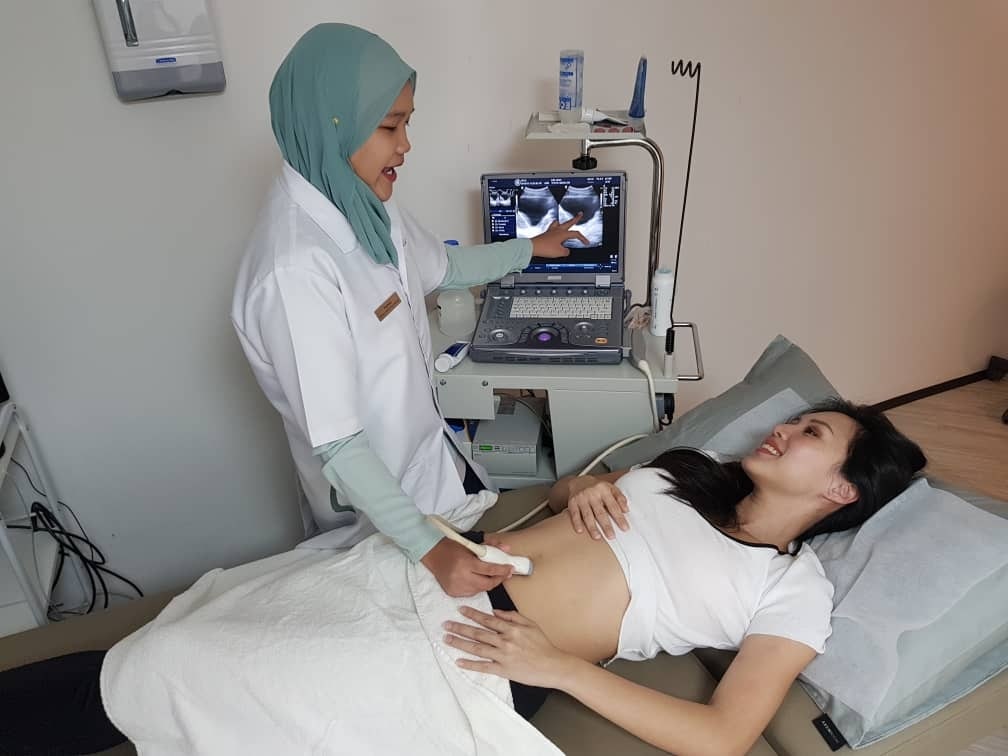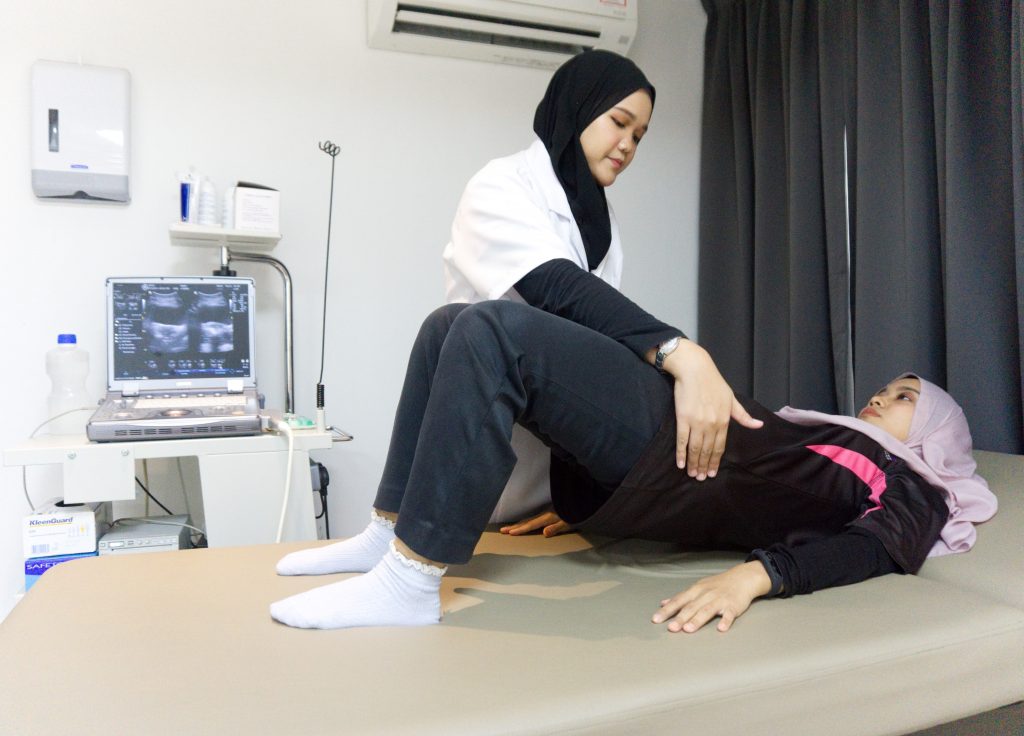What is Urinary Incontinence and how is it treated in Malaysia?
Have you ever experienced uncontrollable leakage of urine especially when you cough, sneeze, laugh, pass wind, or exercise?
Have you experienced an urge to urinate that is so sudden and strong that you do not get to the toilet in time?
If so, you may have Urinary Incontinence.

Types of Urinary Incontinence:
There are many types of incontinence, but the most common types are:
-
Stress Urinary Incontinence (SUI)
- You leak urine when you cough, sneeze, laugh, exercise or lift something heavy.
-
Urge Incontinence (UUI)
- You have a sudden and intense urge to urinate. This is also usually followed by an involuntary loss of urine. You may need to urinate often, including throughout the night.
-
Mixed Incontinence (MUI)
- You are experiencing more than 1 type of urinary incontinence.
-
Overflow Incontinence
-
- A frequent or constant dribbling of urine due to a bladder that doesn’t empty completely.
Am I at risk of Urinary Incontinence?
Studies show that women are much more likely to develop urinary incontinence as compared to men. The risk of developing UI increases with your:
- Number of pregnancies
- Number of childbirths
- Age
- Menopause
- Obesity or overweight
- Regular lifting of heavy objects
- Frequent high impact exercises
Sometimes women report that their urinary incontinence episodes were only present for some time and then the leaking has somehow stopped by itself.
If this happens, you should immediately get a thorough pelvic floor health check as this may be a sign of pelvic organ prolapse.
Prolapse is a situation where your internal organs (either bladder, uterus, or rectum) have dropped from their original position and therefore temporarily blocking the leak. This is a not a good sign.
The organs will only continue to drop further down and may eventually fall outside of our body via our vagina canal.
Pelvic organ prolapse can significantly affect our quality of life, be it daily toileting, movements, and also financially.
What causes Urinary Incontinence?
The most common cause of urinary incontinence found in medical practice is the weakness of your pelvic floor muscles. You can find some of the related factors that tremendously weaken our pelvic floor muscles.
-
Pregnancy and childbirth:
The amount of prolonged straining and stretching due to pregnancy and vaginal delivery can severely weaken your pelvic floor muscles needed for bladder control. The pregnancy and childbirth process can damage bladder nerves and its supportive tissues, causing the loss of bladder control.
What’s more, if you have undergone assisted vaginal delivery such as forceps and vacuum, you will have an increased risk of further weakening of your pelvic floor muscles. This is because of the extra pulling and stretching from the mentioned medical procedures.
-
Hormonal changes from menopause:
Hormones have a direct effect on our muscle tone. Hormonal changes that occur during pregnancy and menopause can cause your pelvic floor muscle to loosen or become thinner, reducing your ability to hold in urine.
-
Lifestyle & Habits:
Frequent constipation, diet, long term coughing and/or sneezing, regularly carrying heavy objects (e.g. babies, weightlifting, furniture) and frequent high impact, intense exercise can cause long term stress to the pelvic floor muscle.
This is the reason why we sometimes see marathon runners leak urine during their run. Whenever there is impact and internal pressure to our pelvic floor from these activities, the pelvic floor is too weak to hold in the urine anymore.
-
Neglect and atrophy:
Have you ever engaged in exercise such as jogging, swimming or badminton after a long break, only to find out there are so many parts of your body that you have never used the next day (from all the aching and soreness)? This is because of the neglect and lack of exercise of all our different muscles.
Like any other muscle on our body, when the pelvic floor muscles are not exercised or strengthened over a long period of time, it starts to lose its strength and ability to function optimally. What’s more, the pelvic floor muscles are inside of our body, making active exercise challenging.
Treatment for Urinary Incontinence
If you have been suffering from urinary incontinence and wondered if it can be treated at all, there is good news for you.
Clinically Proven Treatment
The first line treatment for most cases of urinary incontinence is to restore your pelvic floor muscles through rehabilitation. As mentioned earlier, the weakness of our pelvic floor is a major culprit of our loss of bladder control.
This has been repeatedly clinically proven to be a highly effective first line treatment for urinary incontinence. It is also possible to achieve a full recovery in many cases.
Typically during pelvic floor rehabilitation, trained Women’s Pelvic Health Physiotherapists will guide you to ensure that you are correctly engaging your pelvic floor muscles.
They would also assess the condition of your pelvic floor muscles and advise suitable methods relevant to your condition to restore your bladder control.
This treatment method is non-invasive, which means it can help you avoid surgical and medication risks and complications. It is also regarded as the most cost-effective method for treating urinary incontinence in Malaysia in comparison.
What to Expect in your treatment?
Typically, a women’s health medical professional will perform a variety of procedures such as:
- consultation
- pelvic examination and assessment,
- pelvic floor ultrasound scans,
- pelvic floor muscle training
- electrical stimulation
- biofeedback medical devices
With the assistance of these technology and the professional guidance by trained Women’s Health Physiotherapists, most patients or clients will see results such as regaining normal bladder control and reduced leaking episodes within 1-6 months.
At Vibrance, we have extensive experience curing urinary incontinence in clients, with a stellar record in as little as 3 months using our clinically proven methods without the need for medication nor surgery.

Doctor advised me to do Kegel exercise to treat my urinary incontinence. I have been doing it for a while but why is there no improvement to my symptoms?
This is a rather frequent question we get when treating patients referred on by doctors to our centre.
The key to getting the results is to do Kegel exercise correctly.
When Kegels is not done correctly, there is no beneficial effect and it might worsen your condition in some cases.
Studies show anywhere from 30% to 70% of women who practice Kegels had been doing it wrongly.
Why do so many people get it wrong?
These statistics include people like Physiotherapists and Medical Professionals who do it without the proper biofeedback or physical review by another professional.
This is no surprise, as a correct Kegel contraction is very subtle and often hard to detect.
The muscles are inside of our body which makes visual correction impossible to do. What most people consider a good squeeze is often the result of activating the wrong muscles.
What is considered wrong Kegel exercise?
Common mistakes include activating the wrong muscles such as the buttocks, thigh, and abdominal muscles, holding in breath, arching the back etc.

Liberate Yourself from Urinary Incontinence
Urinary incontinence is a frustrating issue in one’s daily life but it is also a highly treatable condition.
At our Centre, we have assembled a team of trained medical professionals who are equipped with the best-in-class knowledge and latest medical technology to treat and reverse our clients’ urinary incontinence before it becomes an expensive surgical condition.
You do not need to feel embarrassed or feel difficult to talk about the topic. Women’s Health medical professionals are highly trained and experienced in handling urinary incontinence treatment and cases.
Bottom line is, do treat urinary incontinence early so that your cure rate is higher and avoid later stage options such as pelvic surgery including the removal of the uterus and installing artificial bladder control mechanisms that could ruin our quality of life for the rest of our lives.
Written by:
Women’s Health Physiotherapists at Vibrance Pelvic Care Centre
Tel: WhatsApp Careline ![]() +011-59385962 (Mid Valley City, Kuala Lumpur, Malaysia)
+011-59385962 (Mid Valley City, Kuala Lumpur, Malaysia)
